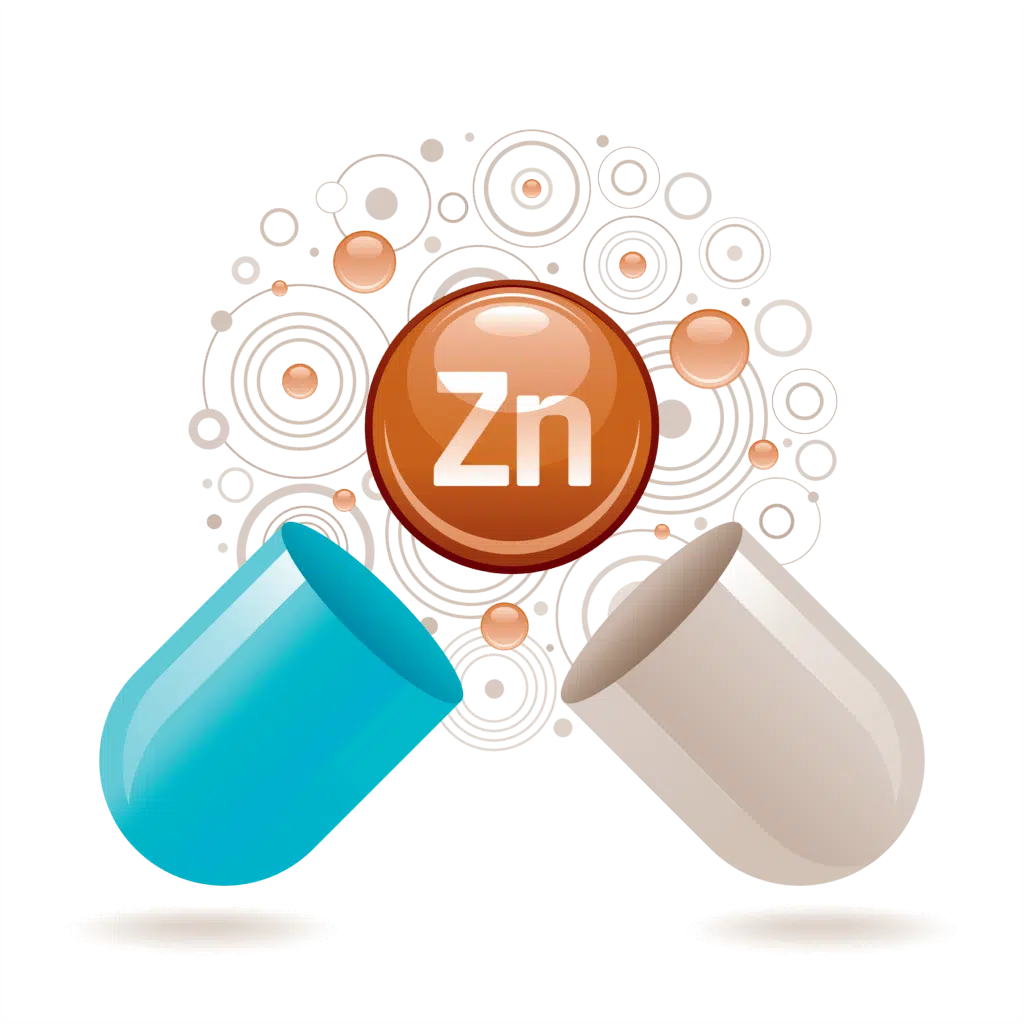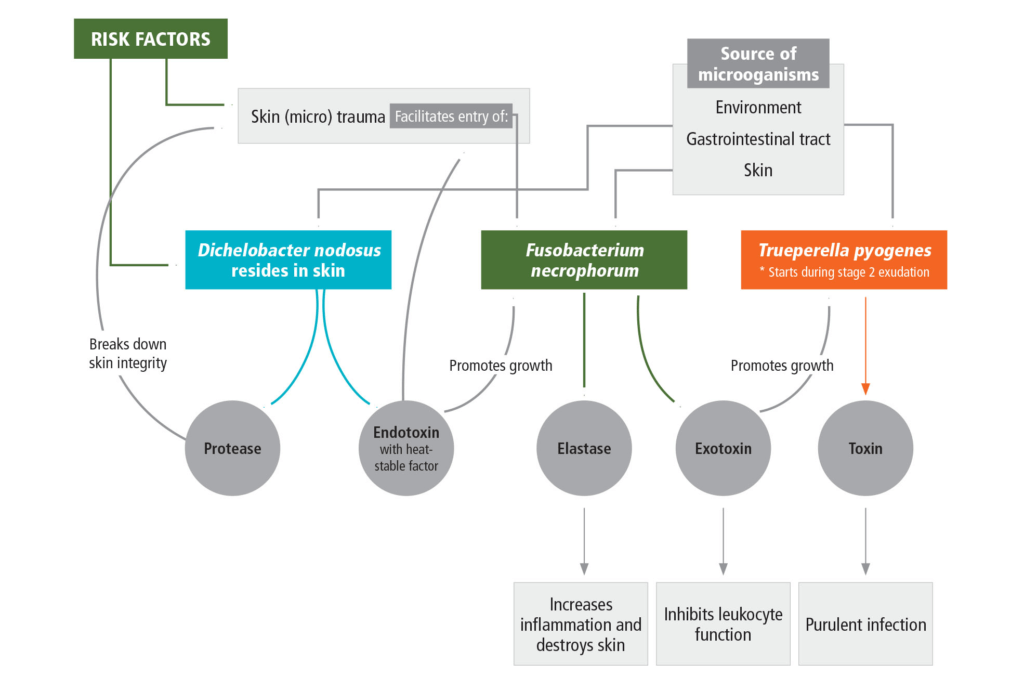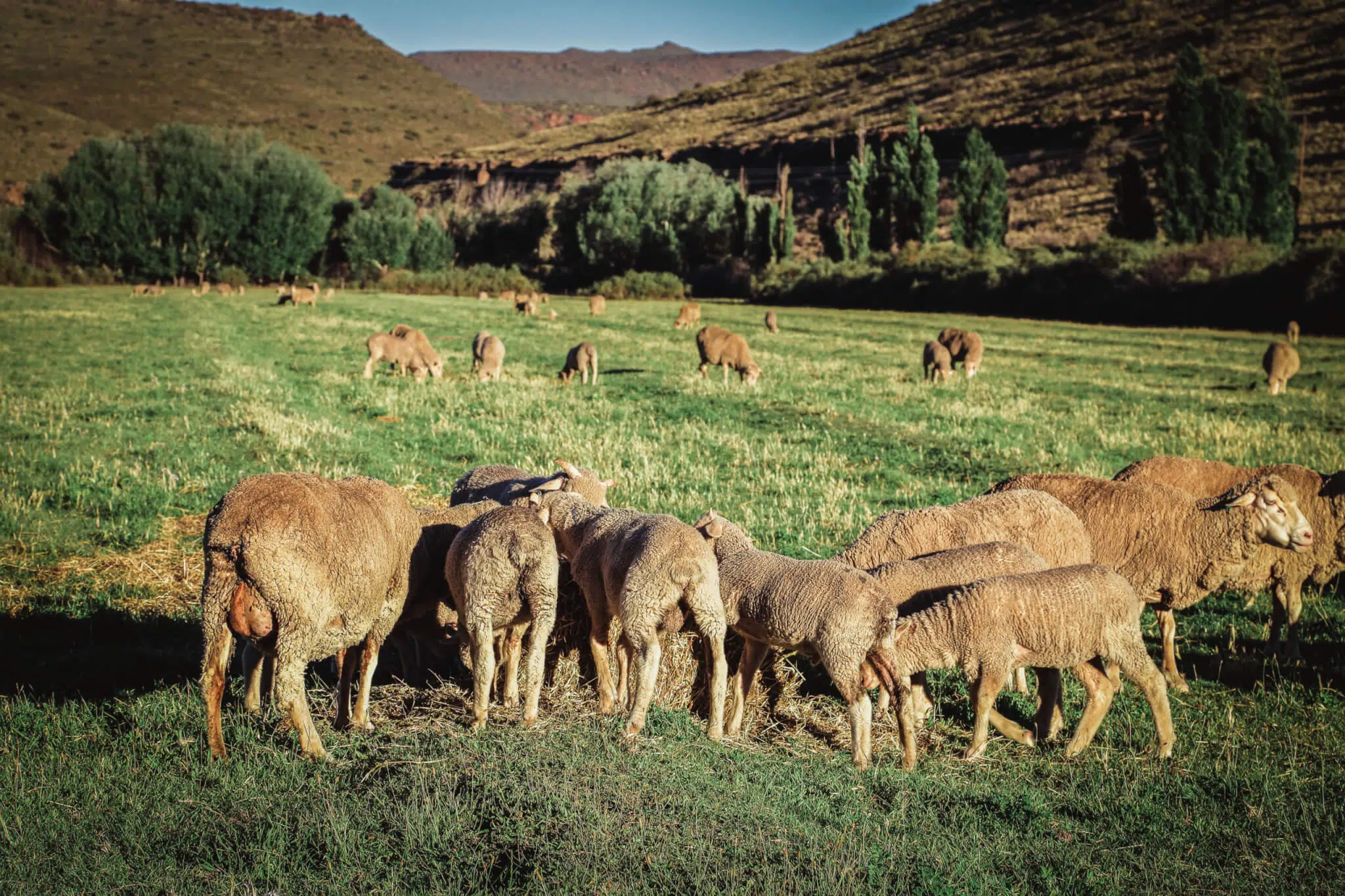Hoof problems in sheep are a major issue that producers face every year in the rainy season. Managing and eradicating this disease is costly, both in terms of time and money, and can cause farmers to feel overwhelmed. Although hoof problems are a multifactorial issue, there are certain factors that can be isolated and discussed to understand this complex problem. In this article, we will focus on the role of zinc in dealing with foot rot.

One mineral, multiple functions
Zinc is an essential trace mineral, meaning that it should be supplemented daily and cannot be stored in the body in large quantities. It is an essential component of over 300 enzyme processes in the body and is the only trace mineral that is needed in all six classes of enzymes that are necessary for bodily functions.
Zinc has a key function in the keratinisation process in hooves. Hooves contain hard keratin that comprises a major portion of the protective matrix of hooves. Studies using complexed zinc that has a higher bioavailability have shown
that feeding complexed zinc decreased the expression of keratin 5 (also known as KRT5, K5, or CK5), which suggests that animals needed fewer keratinocytes for hoof reparation. These animals also had a higher level of biotinidase, showing that there was more biotin available for claw formation.
Zinc plays a crucial role in the immune system. The skin forms the largest physical barrier to pathogens and zinc
supplementation improves wound healing by improving epithelial cell restitution and acting as an antioxidant. Zinc also improves trans-epithelial resistance, preventing the spread of microorganisms. Furthermore, marginal deficiencies cause a decrease in the functionality of T-lymphocytes and in the development of B-lymphocytes. The process of phagocytosis will also be affected, decreasing the efficiency of the immune attack against a pathogen. Zinc also improves transepithelial resistance, preventing the spread of microorganisms.

Pathogenicity that causes foot rot
In sheep, foot rot is caused by the presence of either Dichilobacter nodosus or Fusobacterium necrophorum. Both pathogens cause skin trauma that allows the pathogens to enter the skin and cause an infection in the epidermis of the hoof (Figure 1). The effect is devastating, and includes the breakdown of skin integrity, an increase in inflammation, and destruction of the skin, allowing for even more pathogen entry.
Conclusion: Simple prevention
Knowing that this disease is primarily caused by microorganisms that enter the system through broken skin, we can focus on the role of zinc in dealing with foot rot, knowing that it will improve interdigital skin integrity, strengthen the immune system’s attack on the invading microorganisms, and improve hoof health to prevent hooves from injury. Zinc will help lower the incidence and severity of foot rot in high-risk seasons.
Anri Strauss is a scientific adviser in the ruminant team at Chemuniqué, holding a master’s degree in nutrition from the University of Pretoria. She grew up on a farm and still lives in the Free State, where she and her husband also farm with Boer goats.










